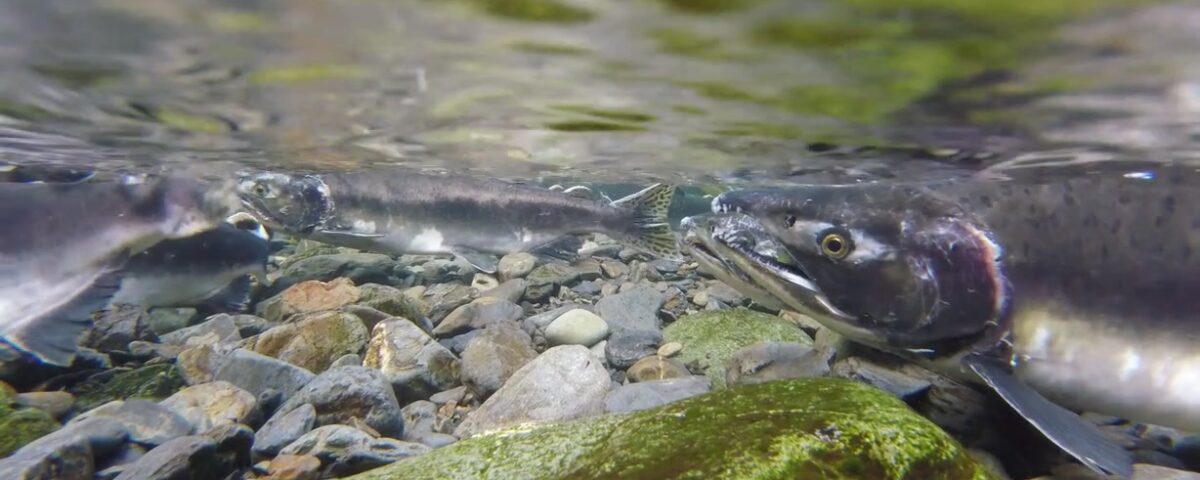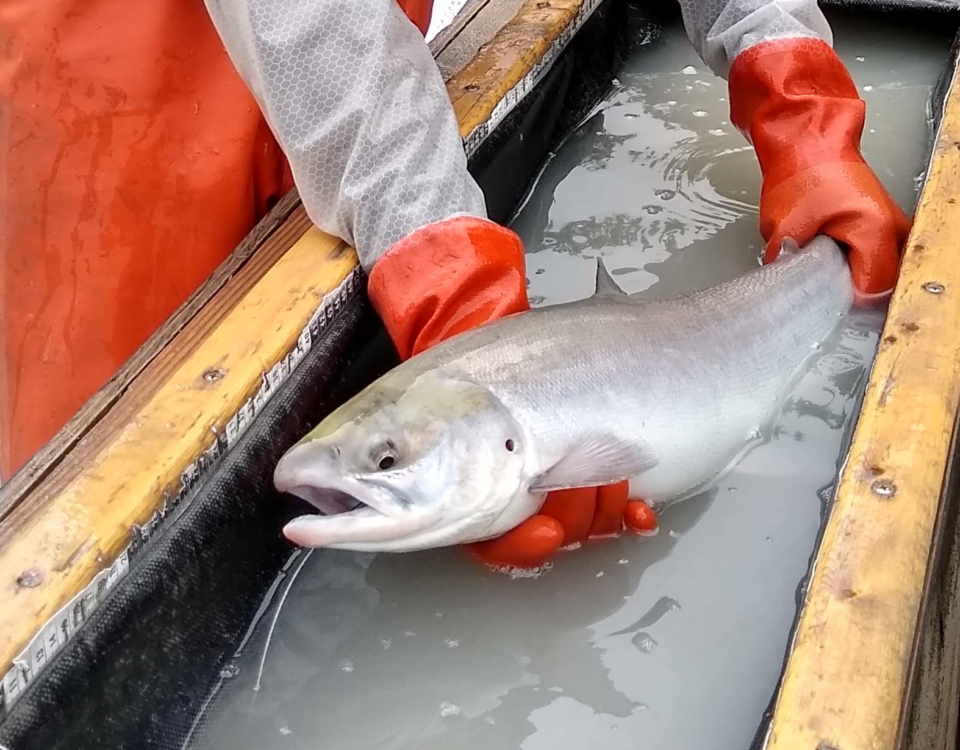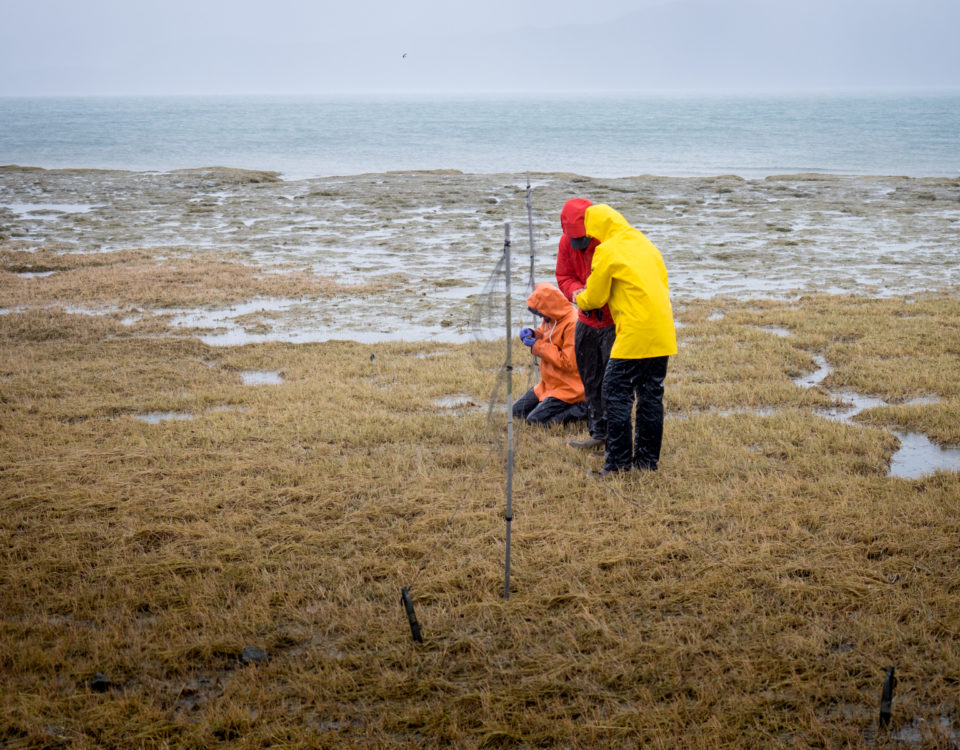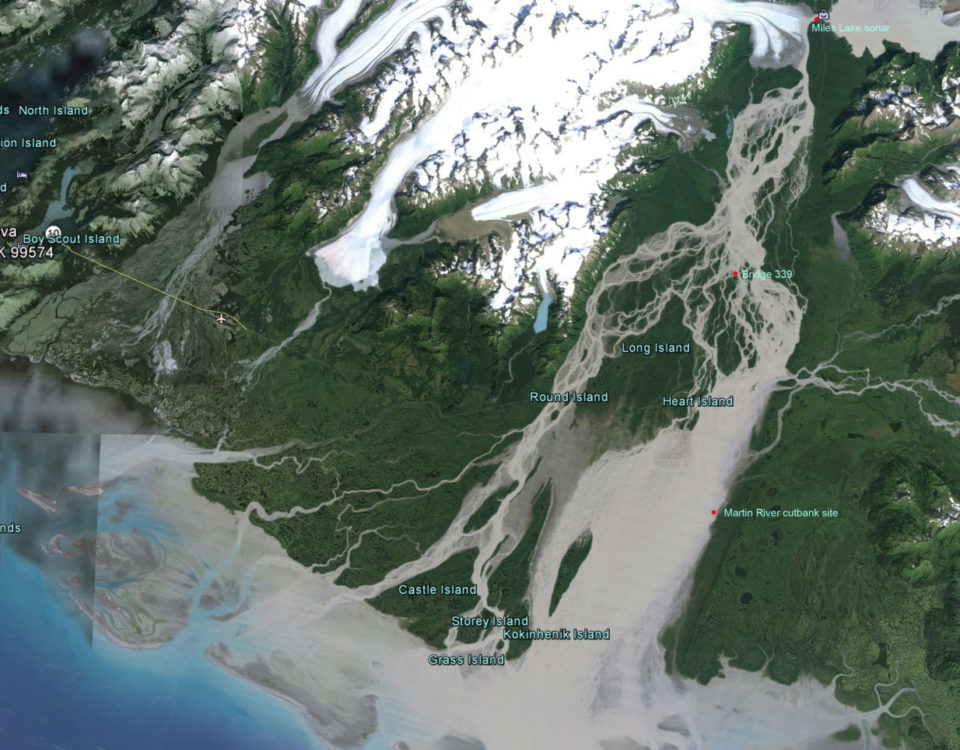Biological traits in wild and hatchery pink salmon in Prince William Sound

A new paper was just released in Ecology and Evolution describing biological traits in wild and hatchery pink salmon in Prince William Sound. The paper’s authors are Julia McMahon (UAF), Dr. Samuel May (UAF), Dr. Pete Rand (PWSSC), Dr. Kristen Gorman (UAF), Dr. Megan McPhee (UAF), and Dr. Peter Westley (UAF). Both Julia McMahon and Dr. Kristen Gorman formerly worked at PWSSC. This paper is based on McMahon’s master thesis. The paper is titled Phenotypic Sorting of Pink Salmon Hatchery Strays May Alleviate Adverse Impacts of Reduced Variation in Fitness-Associated Traits. A summary of the paper and key findings can be found below.
Traits were measured on over 200,000 adult pink salmon in 30 streams over an eight-year period in western Prince William Sound, Alaska. The authors found that wild-origin pink salmon exhibited greater traits variation than hatchery-origin pink salmon. They noted an association between traits of wild- and hatchery-origin pink salmon returning to Prince William Sound. For example, larger hatchery-origin pink salmon tended to be associated with larger wild-origin pink salmon in spawning streams. In ecology, this phenomenon is known as phenotypic sorting. This is the first time phenotypic sorting in Prince William Sound pink salmon has been documented in scientific literature. In odd years, when adult pink salmon abundance in the ocean is highest, hatchery-origin pink salmon in Prince William Sound come back smaller than their wild counterparts. The body sizes of returning wild- and hatchery-origin pink salmon during even years are not different.
This study raises many new questions about the ecological mechanisms that give rise to these trait differences between wild and hatchery-origin pink salmon in Prince William Sound. New studies, both in the field and in the lab, are urgently needed to help us better understand these mechanisms and what these results mean in terms of overall salmon productivity. Click here to learn more about this paper.




